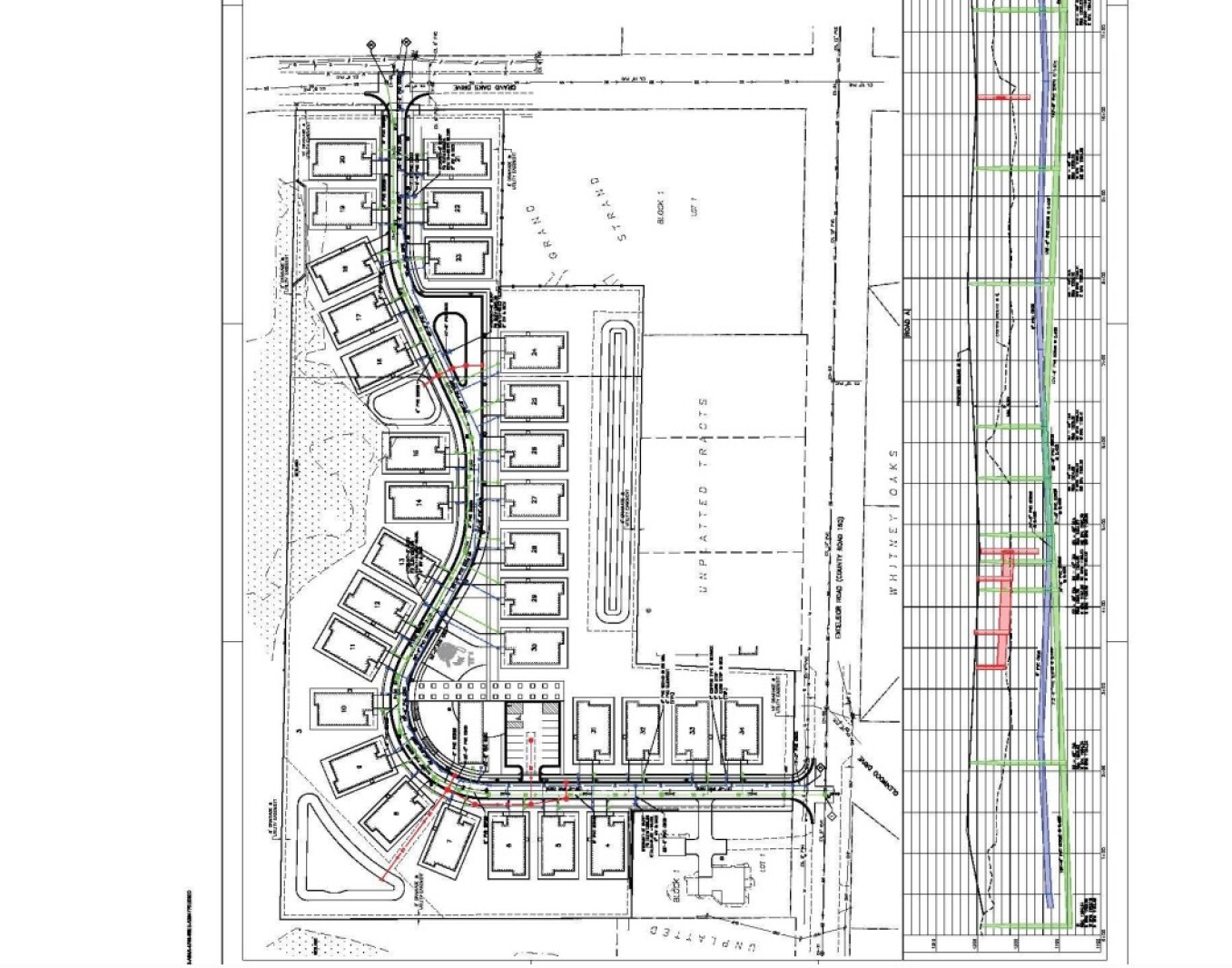Report on Public Transport Infrastructure and Sustainable Development Goals in Catalonia
1.0 Introduction: Aligning Transport Infrastructure with Global Goals
The Government of Catalonia’s Department of Territory is finalizing a project to enhance public transport infrastructure, with a direct focus on achieving key United Nations Sustainable Development Goals (SDGs). This initiative addresses critical issues of safety, accessibility, and inclusivity, primarily targeting SDG 5 (Gender Equality), SDG 10 (Reduced Inequalities), and SDG 11 (Sustainable Cities and Communities). The project’s objective is to develop a new infrastructure guide based on user experience to inform future development, ensuring transport systems are safe and accessible for all citizens.
2.0 Project Methodology: A User-Centric Approach to Sustainable Urban Development
To gather qualitative data, the department implemented a series of exploratory walks between September 1 and October 28. This methodology aligns with SDG 11.7, which calls for universal access to safe, inclusive, and accessible public spaces.
- Groups of 10-15 women, who constitute 60% of public transport users, were engaged to evaluate infrastructure.
- Seven key bus and train stations across Catalonia, including Barcelona Sants and Tortosa bus station, were selected as assessment sites.
- Participants were tasked with identifying “critical points” related to low visibility, safety concerns, and accessibility barriers.
The data collected will form the basis of a reference guide for all future infrastructure projects, ensuring that the principles of inclusive and sustainable urban planning are systematically integrated.
3.0 Addressing SDG 5: Gender Equality and Safety in Public Spaces
A primary driver for this initiative is the urgent need to address gender-based safety concerns, a core target of SDG 5. A recent departmental survey revealed alarming statistics that the project aims to counteract through improved infrastructure design.
- Key Statistic: 57% of women reported experiencing sexual harassment while using public transport.
- Project Response: The initiative directly confronts this issue by identifying and recommending physical changes to the environment that can deter harassment and improve feelings of security. This includes enhancing lighting, eliminating isolated areas, and improving overall visibility.
By focusing on the lived experiences of women, the project seeks to create public transport networks where women and girls feel safe, thereby promoting their full participation in public life.
4.0 Field Assessment Findings: Case Studies and Link to SDGs
The exploratory walks yielded specific findings that highlight existing gaps in meeting sustainability and equality standards.
-
Clot-Aragó Rodalies Station (Barcelona)
The assessment at this station underscored the need for improvements related to SDG 10 (Reduced Inequalities) and SDG 11 (Sustainable Cities and Communities).
- Lighting and Accessibility: Deficiencies in lighting were identified as a major safety concern. The lack of sufficient elevators and escalators presents a barrier for users with mobility challenges.
- Inclusive Signage: New signage was found to be too small, posing a significant challenge for users with visual impairments, directly contravening the principles of universal access outlined in SDG 10.
-
Figueres Bus Station
The walk in Figueres provided insights into how infrastructure can better serve community needs and enhance perceived safety.
- Community Integration (SDG 11): Participants requested more practical, non-tourist signage directing users to essential public facilities like health centers and schools, fostering a more integrated and accessible city.
- Human Presence and Safety: The constant presence of staff and security guards was highly valued by users, who reported feeling safer knowing assistance was available.
- Design and Perceived Risk: A participant noted a preference for trains over buses, as the confined space of a bus makes it more difficult to move away from an uncomfortable situation, highlighting how vehicle design impacts user safety perceptions.
5.0 Conclusion and Future Directives
This project represents a significant step towards embedding the Sustainable Development Goals within Catalonia’s transport planning framework. The forthcoming guide, informed by direct user feedback, will serve as a critical tool for building safer, more inclusive, and sustainable transport systems. By prioritizing the needs of the most vulnerable users, the Department of Territory is actively working to achieve SDG 5, SDG 10, and SDG 11, ensuring that public infrastructure promotes equality and enhances the well-being of all citizens.
1. Which SDGs are addressed or connected to the issues highlighted in the article?
SDG 5: Gender Equality
- The article directly addresses gender equality by focusing on the safety of women in public transport. The project was initiated in response to a survey where 57% of women reported experiencing sexual harassment. The exploratory walks specifically involve groups of women to identify safety concerns, acknowledging that women are the main users of public transport (60%) and have specific needs regarding safety and security.
SDG 11: Sustainable Cities and Communities
- The entire project described in the article is centered on improving public transport infrastructure, which is a key component of sustainable cities. The goal is to make bus and train stations safer, more accessible, and inclusive for all users, thereby contributing to the creation of sustainable urban environments.
SDG 10: Reduced Inequalities
- The article touches upon reducing inequalities by highlighting the need for better accessibility for users with disabilities. The mention of new signs being “very small and hard to see for users with visual impairments” and the historical lack of “elevators or escalators” at Clot station points to efforts to make public transport more inclusive for people with physical and visual impairments.
2. What specific targets under those SDGs can be identified based on the article’s content?
SDG 5: Gender Equality
- Target 5.2: Eliminate all forms of violence against all women and girls in the public and private spheres. The project’s primary motivation is to combat sexual harassment against women on public transport, which is a form of violence in the public sphere. The creation of a guide for safer infrastructure is a direct action towards achieving this target.
SDG 11: Sustainable Cities and Communities
- Target 11.2: By 2030, provide access to safe, affordable, accessible and sustainable transport systems for all, improving road safety, notably by expanding public transport, with special attention to the needs of those in vulnerable situations, women, children, persons with disabilities and older persons. The article details a project focused on improving the safety (addressing harassment, low visibility) and accessibility (better signage for visually impaired, elevators) of public transport, with a specific focus on the needs of women.
- Target 11.7: By 2030, provide universal access to safe, inclusive and accessible, green and public spaces. Public transport stations are public spaces. The project aims to make these spaces safer and more inclusive by identifying and rectifying “critical points” with low visibility and safety concerns, thereby improving universal access.
SDG 10: Reduced Inequalities
- Target 10.2: By 2030, empower and promote the social, economic and political inclusion of all, irrespective of age, sex, disability, race, ethnicity, origin, religion or economic or other status. The article’s focus on improving infrastructure, such as adding elevators, escalators, and better signage for those with visual impairments, directly supports the inclusion of persons with disabilities, ensuring they can use public transport systems effectively.
3. Are there any indicators mentioned or implied in the article that can be used to measure progress towards the identified targets?
Indicators for SDG 5 and SDG 11
- Implied Indicator (related to 5.2.2 and 11.7.2): Proportion of women subjected to sexual harassment in public spaces. The article provides a baseline statistic: “57% of women reported having experienced it at some point while using public transport.” Progress could be measured by conducting follow-up surveys to see if this percentage decreases after infrastructure improvements are implemented based on the project’s guide.
Indicators for SDG 11 and SDG 10
- Qualitative Indicators (related to 11.2.1): The article implies several qualitative indicators through the findings of the exploratory walks. These are not numbers but observable conditions that measure accessibility and safety:
- Presence and adequacy of lighting in stations.
- Availability and functionality of elevators and escalators.
- Clarity and visibility of signage, especially for users with visual impairments.
- Presence of staff and security guards, which contributes to a feeling of safety.
- User perception of safety, as captured in the discussions during the walks (e.g., feeling “confined” on a bus versus being able to move on a train).
4. Create a table with three columns titled ‘SDGs, Targets and Indicators” to present the findings from analyzing the article.
| SDGs | Targets | Indicators |
|---|---|---|
| SDG 5: Gender Equality | 5.2: Eliminate all forms of violence against all women and girls in the public spheres. | Quantitative: The statistic that 57% of women have experienced sexual harassment on public transport serves as a baseline indicator related to SDG Indicator 5.2.2 (sexual violence by persons other than an intimate partner). |
| SDG 11: Sustainable Cities and Communities | 11.2: Provide access to safe, accessible and sustainable transport systems for all, with special attention to the needs of women and persons with disabilities. | Qualitative: Findings from exploratory walks on the need for better lighting, improved signage, and accessibility features like elevators serve as indicators of the quality of access to public transport. |
| 11.7: Provide universal access to safe, inclusive and accessible public spaces. | Quantitative/Perceptual: The 57% harassment statistic acts as an indicator for safety in public spaces (related to SDG Indicator 11.7.2). The presence of staff and security guards is mentioned as a positive indicator of perceived safety. | |
| SDG 10: Reduced Inequalities | 10.2: Empower and promote the social inclusion of all, irrespective of disability. | Qualitative: The identification of inadequate signage for the visually impaired and the past lack of elevators/escalators are indicators of existing barriers to inclusion for persons with disabilities. |
Source: catalannews.com







